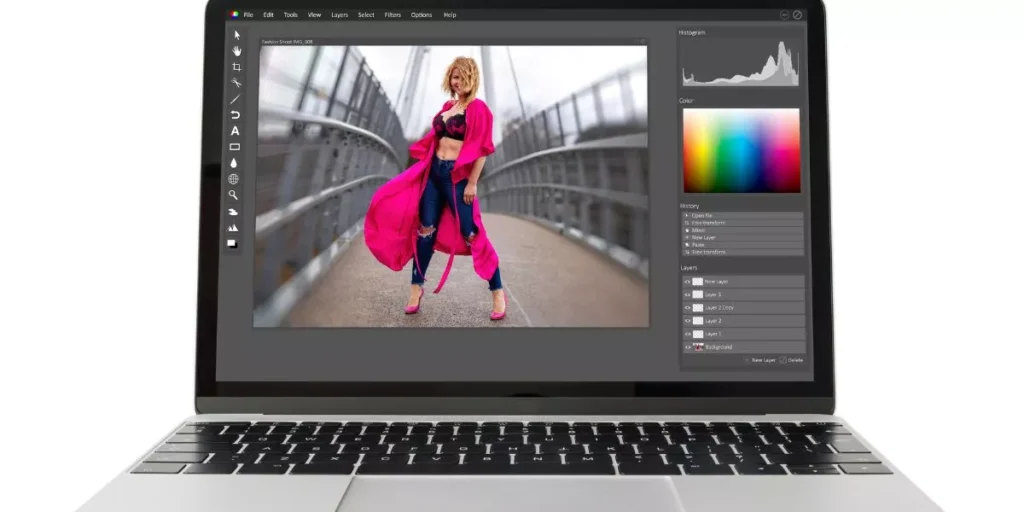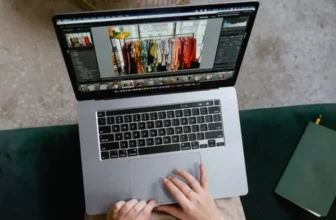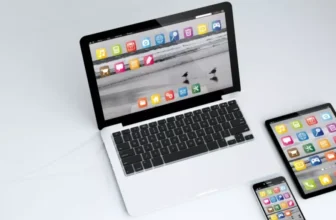
When selecting a laptop for graphic design work, you’ll want to consider various factors like display quality, processing power, and RAM capacity. The right choice can significantly impact your productivity and creativity. As you navigate the vast array of options available, understanding the key features to look for and discovering the top laptop picks can help you make an informed decision. Stay tuned to explore the best laptops that cater to the unique requirements of graphic designers, ensuring a seamless workflow and stunning visual output.
Key Features to Look For
When choosing a laptop for graphic design, prioritize features like high-resolution displays and powerful processors. A high-resolution display is crucial for graphic designers as it ensures that colors are accurate and details are sharp. Look for laptops with at least a Full HD (1920 x 1080) resolution, but if your budget allows, consider going for a 4K display for even more clarity.
Additionally, a powerful processor is essential for handling graphic design software smoothly. Opt for laptops equipped with Intel Core i7 or AMD Ryzen 7 processors to ensure seamless performance when working on complex design projects.
In addition to displays and processors, consider the amount of RAM a laptop offers. Graphic design software can be memory-intensive, so aim for a laptop with at least 16GB of RAM to ensure smooth multitasking. Storage is another important factor to consider. SSDs are faster than traditional hard drives and can significantly improve overall system performance.
Lastly, pay attention to the graphics card. A dedicated graphics card will help accelerate rendering and improve overall graphic design performance. By prioritizing these key features, you can find a laptop that meets your graphic design needs efficiently.
Top Laptop Picks for Designers
For graphic designers seeking high-performance laptops, here are some top picks to consider.
The MacBook Pro is a favorite among designers for its vibrant Retina display, powerful performance, and sleek design. Its color accuracy and overall performance make it a great choice for graphic design work.
Another excellent option is the Dell XPS 15, known for its stunning InfinityEdge display and robust processing power, ideal for handling graphic design software with ease.
If you prefer a 2-in-1 design, the Microsoft Surface Book 3 offers versatility with its detachable touchscreen display and high-end specifications suitable for graphic design tasks.
For those who value portability, the Razer Blade 15 is a compact yet powerful laptop with a high refresh rate display and strong graphics capabilities.
Lastly, the HP Spectre x360 combines style and performance, featuring a convertible design and impressive processing power, making it a versatile option for graphic designers on the go.
Budget-Friendly Options
Consider affordable laptops that still offer decent performance for graphic design tasks. When looking for budget-friendly options as a graphic designer, you can opt for models that provide a good balance between price and functionality. One such option is the Acer Aspire 5, which comes equipped with a decent processor and a dedicated graphics card, making it suitable for handling design software without breaking the bank.
Another budget-friendly laptop to consider is the HP Pavilion x360. This 2-in-1 device offers flexibility with its convertible design, allowing you to switch between laptop and tablet mode for different design tasks. It also has a touchscreen display, which can be beneficial for tasks that require precise input, such as drawing or editing photos.
Lastly, the Lenovo IdeaPad 3 is a cost-effective option that still delivers reliable performance for graphic design work. With a good amount of RAM and storage space, this laptop can handle design software smoothly without costing you a fortune. By choosing one of these budget-friendly options, you can still pursue your graphic design projects effectively without overspending.
Tips for Optimizing Performance
To optimize the performance of your budget-friendly laptop for graphic design tasks, focus on maximizing efficiency through simple adjustments and software settings.
Start by keeping your system clean and organized. Regularly delete temporary files, uninstall unused programs, and update your software to ensure smooth operation. Consider upgrading your RAM if possible, as more memory can significantly enhance your laptop’s performance when working on large design files. Additionally, adjust your power settings to prioritize performance over battery life when working on intensive graphic design projects.
Another tip is to utilize external storage devices, such as external hard drives or cloud storage, to free up space on your laptop and prevent it from slowing down. It’s also essential to close unnecessary background applications and browser tabs to allocate more resources to your graphic design software.
Furthermore, optimizing your display settings, such as adjusting the resolution and color calibration, can improve the visual quality of your designs and enhance your overall workflow. By implementing these simple tips, you can effectively optimize the performance of your budget-friendly laptop for graphic design tasks.
Trending Products
























